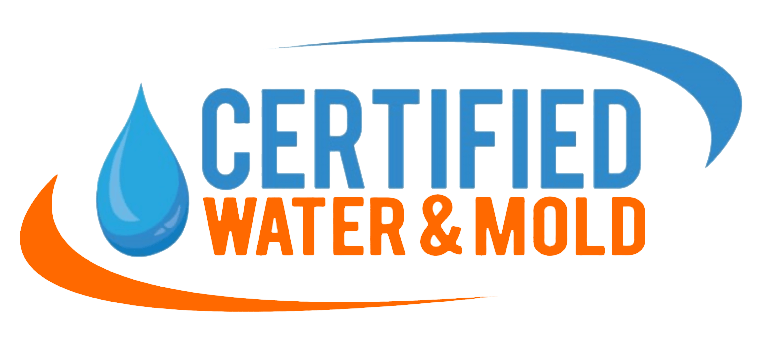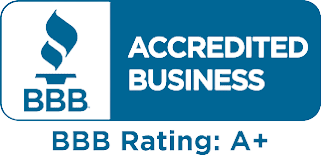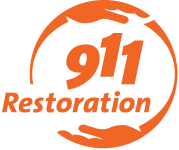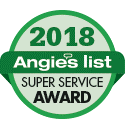Certified Water & Mold Restoration, LLC
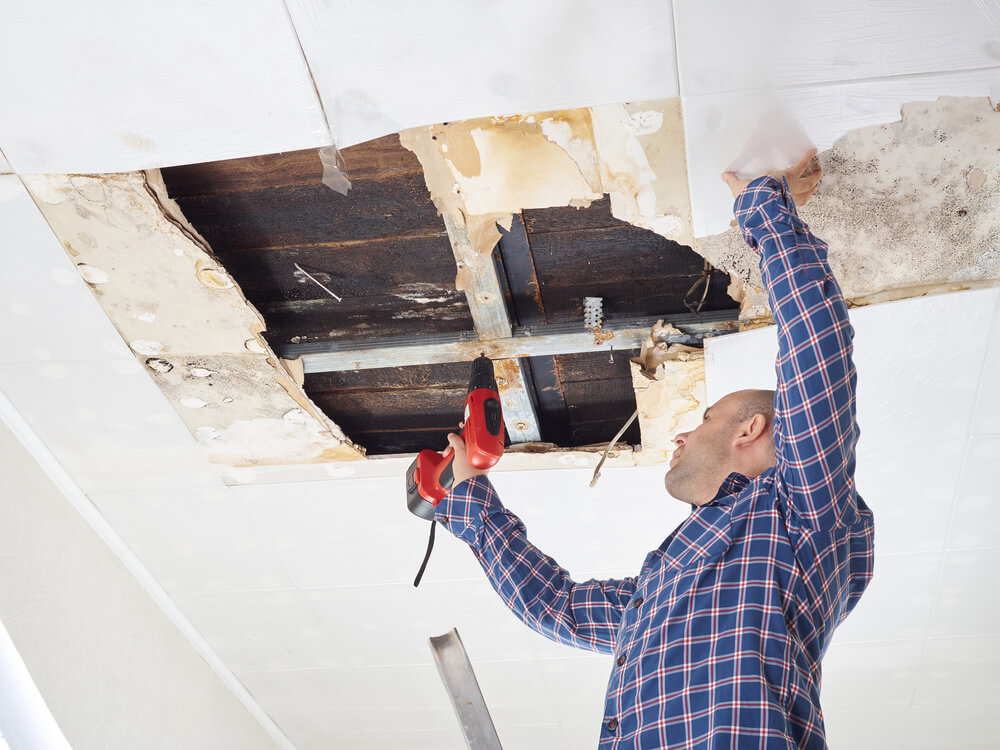
CONTACT US
- 2021 B East Spruce Circle Olathe, KS 66062.
- 816-835-4959
- mike@cwmrestoration.com
BUISNESS LISTINGS
How to Restore Water Damage in a Ceiling
Find the Source of the Leak in the Ceiling
A sudden leak from your ceiling, no matter how seemingly minor, demands immediate attention. Left unchecked, even a small drip can lead to significant structural damage, costly repairs, and potentially, health hazards due to mold growth. This professional guide equips you with the knowledge and steps to efficiently identify and address the source of the leak, minimize damage, and restore your ceiling to its former glory.
Identifying the Culprit: Unleashing the Inner Leak Detective
● Methodical Examination: Begin by meticulously analyzing the location of the leak. Does it align with any plumbing fixtures, ventilation shafts, or the roofline? Look for telltale signs like water stains or discoloration that might reveal the leak’s origin, as leaks often travel hidden paths before revealing themselves.
● Expand Your Search: Don’t limit your investigation to the immediate area. Leaks can be devious travelers, so expand your search to fixtures above, such as showers, sinks, or even appliances, for any trace of moisture.
● Professional Assistance: If your detective work yields no concrete answers, seeking help from a licensed plumber is crucial. Equipped with advanced tools like moisture meters and thermal imaging, they can become your secret weapon in tracking down even the most elusive leaks.
Remove the Damaged Drywall
Water damage wreaking havoc on your ceiling in your Olathe or Overland Park home? Don’t despair! While the sight of warped, buckled drywall can be alarming, understanding the situation and taking informed action is key. This guide empowers you to assess the damage, navigate the removal process, and ultimately restore your ceiling with confidence.
Assessment: Friend or Foe?
Minor buckling with a clear leak source? Consider minor repairs using spackle and paint. However, extensive warping, sagging, or an unknown leak source demands a different approach: removing sections for thorough inspection. While counterintuitive, it allows for a clearer picture of the underlying issue.
Removal with Precision:
Safety first! Don gloves, mask, and goggles for protection. Move furniture away and strategically place buckets or towels beneath the leak to collect drips. Utilize a drywall saw or utility knife to meticulously cut away damaged sections, following joists for easier removal. Once removed, thoroughly clean the exposed area with a disinfectant solution to prevent mold growth.
Repair & Restoration: Your Options:
DIY or Pro? Extensive damage or limited experience warrants professional intervention. A qualified handyman can save you time and ensure proper repairs are made.
Installation Techniques: When replacing drywall, adhere to industry-standard installation techniques for strong, moisture-resistant results. This includes using a leveler for flat seams and corners.
Patching for Efficiency: For minimal structural damage and stains, consider using a keyhole saw to cut a neat square or rectangle. This patch approach can be more cost-effective and less frustrating than replacing large sections.
Releasing Pressure: If the drywall sags significantly, carefully puncture it (with a bucket underneath) to release water pressure and prevent further damage.
Dry the Damaged Area
Discovering a water stain on your ceiling is unsettling, but panic can cloud your judgment. Remember, swift action is key to mitigating damage to your Olathe or Overland Park home and safeguarding your health. This comprehensive guide equips you with the knowledge and steps to effectively address water-damaged ceilings, from pinpointing the source to achieving a flawless restoration.
Unmasking the Culprit:
● Plumber’s Playground: Water stains near plumbing fixtures like bathrooms or kitchens often hint at leaky pipes. But don’t rule out roof leaks or rainwater infiltration – a thorough investigation is crucial.
● Seek Expert Eyes: Consulting a qualified plumber is your first line of defense. They possess the expertise to diagnose the leak’s origin and implement timely repairs, halting further water intrusion and preventing escalation of the issue.
Drying Out the Threat:
Time Warp Speed: Every second counts! Act quickly to minimize moisture buildup and prevent the insidious growth of mold. The severity of the damage dictates the drying approach:
● Controlled Exposure: When feasible, carefully expose the damaged area to enhance airflow and expedite drying. Think about removing ceiling panels where possible to promote better ventilation.
● Dehumidifier Duo: Invest in a powerful dehumidifier specifically designed for water damage restoration. These workhorses actively extract moisture from the air, significantly accelerating the drying process and creating an environment hostile to mold growth.
● Strategic Ventilation: Strategically positioning an exhaust fan near the affected area can work wonders. By drawing in fresh air and expelling moist air, it creates a drying current that helps combat water damage.
Prepping for Restoration:
● Paint with a Purpose: Ditch the regular paint cans and opt for professional-grade ceiling paints. These specialized formulations offer superior adhesion and durability, ensuring a beautiful and long-lasting finish even on potentially uneven surfaces.
● Stain-Banishing Solutions: Invest in a high-quality stain-blocking primer. This double agent not only seals any remaining leaks but also effectively hides unsightly watermarks, leaving your ceiling looking pristine.
When Expertise Reigns Supreme:
● Water Damage Warriors: For extensive damage or complex repairs, don’t hesitate to engage a certified water damage mitigation and restoration specialist. Their specialized knowledge and experience translate into efficient cleaning, drying, and repair techniques that not only address the immediate issue but also prevent future problems and safeguard your health from potential mold exposure.
● Ceiling Craft Connoisseurs: For larger areas or intricate restorations, consider consulting a contractor specializing in ceiling repairs and repaints. Their focused expertise and meticulous attention to detail guarantee a seamless and aesthetically pleasing outcome, restoring your ceiling to its former glory.
Repair the Damaged Ceiling Area
Discovering a water-stained ceiling in your Olathe or Overland Park home can send shivers down your spine. But before panic sets in, remember this: swift action is your shield against escalating damage and potential health risks. This comprehensive guide has hopefully equipped you with the knowledge and resources to tackle water damage, from identifying the culprit to achieving a flawless restoration, whether you choose the DIY route or enlist professional help.
Don’t underestimate the power of prompt action. Every minute of lingering moisture fuels mold growth, a silent health hazard that can trigger respiratory issues and allergies. Immediate response not only minimizes damage but also keeps repair costs in check.
Our team handles ceiling repairs of all kinds, including cracked or damaged plaster and drywall, water damage, accidental holes, and more. If you have water damage or a leak in your ceiling in the Kansas area, contact CWM Restoration
The best way to prevent mold damage is to avoid moisture buildup in your home. Here are some tips:
• Fix leaks promptly: If you see a leak, fix it immediately.
• Ventilate damp areas: Bathrooms, kitchens, and laundry rooms should have adequate ventilation to prevent moisture buildup.
• Use dehumidifiers: Dehumidifiers can help to reduce humidity levels in your home.
• Keep your home clean and dry: Clean up spills and wipe down wet surfaces promptly.
• Inspect your home regularly: Inspect your home for signs of mold growth on a regular basis.
If you suspect mold damage in your home, it is important to take action to prevent further growth and to protect your health.
The best way to prevent mold damage is to avoid moisture buildup in your home. Here are some tips:
• Fix leaks promptly: If you see a leak, fix it immediately.
• Ventilate damp areas: Bathrooms, kitchens, and laundry rooms should have adequate ventilation to prevent moisture buildup.
• Use dehumidifiers: Dehumidifiers can help to reduce humidity levels in your home.
• Keep your home clean and dry: Clean up spills and wipe down wet surfaces promptly.
• Inspect your home regularly: Inspect your home for signs of mold growth on a regular basis.
If you suspect mold damage in your home, it is important to take action to prevent further growth and to protect your health.
The best way to prevent mold damage is to avoid moisture buildup in your home. Here are some tips:
• Fix leaks promptly: If you see a leak, fix it immediately.
• Ventilate damp areas: Bathrooms, kitchens, and laundry rooms should have adequate ventilation to prevent moisture buildup.
• Use dehumidifiers: Dehumidifiers can help to reduce humidity levels in your home.
• Keep your home clean and dry: Clean up spills and wipe down wet surfaces promptly.
• Inspect your home regularly: Inspect your home for signs of mold growth on a regular basis.
If you suspect mold damage in your home, it is important to take action to prevent further growth and to protect your health.
The best way to prevent mold damage is to avoid moisture buildup in your home. Here are some tips:
• Fix leaks promptly: If you see a leak, fix it immediately.
• Ventilate damp areas: Bathrooms, kitchens, and laundry rooms should have adequate ventilation to prevent moisture buildup.
• Use dehumidifiers: Dehumidifiers can help to reduce humidity levels in your home.
• Keep your home clean and dry: Clean up spills and wipe down wet surfaces promptly.
• Inspect your home regularly: Inspect your home for signs of mold growth on a regular basis.
If you suspect mold damage in your home, it is important to take action to prevent further growth and to protect your health.
The best way to prevent mold damage is to avoid moisture buildup in your home. Here are some tips:
• Fix leaks promptly: If you see a leak, fix it immediately.
• Ventilate damp areas: Bathrooms, kitchens, and laundry rooms should have adequate ventilation to prevent moisture buildup.
• Use dehumidifiers: Dehumidifiers can help to reduce humidity levels in your home.
• Keep your home clean and dry: Clean up spills and wipe down wet surfaces promptly.
• Inspect your home regularly: Inspect your home for signs of mold growth on a regular basis.
If you suspect mold damage in your home, it is important to take action to prevent further growth and to protect your health.
The best way to prevent mold damage is to avoid moisture buildup in your home. Here are some tips:
• Fix leaks promptly: If you see a leak, fix it immediately.
• Ventilate damp areas: Bathrooms, kitchens, and laundry rooms should have adequate ventilation to prevent moisture buildup.
• Use dehumidifiers: Dehumidifiers can help to reduce humidity levels in your home.
• Keep your home clean and dry: Clean up spills and wipe down wet surfaces promptly.
• Inspect your home regularly: Inspect your home for signs of mold growth on a regular basis.
If you suspect mold damage in your home, it is important to take action to prevent further growth and to protect your health.
The best way to prevent mold damage is to avoid moisture buildup in your home. Here are some tips:
• Fix leaks promptly: If you see a leak, fix it immediately.
• Ventilate damp areas: Bathrooms, kitchens, and laundry rooms should have adequate ventilation to prevent moisture buildup.
• Use dehumidifiers: Dehumidifiers can help to reduce humidity levels in your home.
• Keep your home clean and dry: Clean up spills and wipe down wet surfaces promptly.
• Inspect your home regularly: Inspect your home for signs of mold growth on a regular basis.
If you suspect mold damage in your home, it is important to take action to prevent further growth and to protect your health.
The best way to prevent mold damage is to avoid moisture buildup in your home. Here are some tips:
• Fix leaks promptly: If you see a leak, fix it immediately.
• Ventilate damp areas: Bathrooms, kitchens, and laundry rooms should have adequate ventilation to prevent moisture buildup.
• Use dehumidifiers: Dehumidifiers can help to reduce humidity levels in your home.
• Keep your home clean and dry: Clean up spills and wipe down wet surfaces promptly.
• Inspect your home regularly: Inspect your home for signs of mold growth on a regular basis.
If you suspect mold damage in your home, it is important to take action to prevent further growth and to protect your health.
The best way to prevent mold damage is to avoid moisture buildup in your home. Here are some tips:
• Fix leaks promptly: If you see a leak, fix it immediately.
• Ventilate damp areas: Bathrooms, kitchens, and laundry rooms should have adequate ventilation to prevent moisture buildup.
• Use dehumidifiers: Dehumidifiers can help to reduce humidity levels in your home.
• Keep your home clean and dry: Clean up spills and wipe down wet surfaces promptly.
• Inspect your home regularly: Inspect your home for signs of mold growth on a regular basis.
If you suspect mold damage in your home, it is important to take action to prevent further growth and to protect your health.
The best way to prevent mold damage is to avoid moisture buildup in your home. Here are some tips:
• Fix leaks promptly: If you see a leak, fix it immediately.
• Ventilate damp areas: Bathrooms, kitchens, and laundry rooms should have adequate ventilation to prevent moisture buildup.
• Use dehumidifiers: Dehumidifiers can help to reduce humidity levels in your home.
• Keep your home clean and dry: Clean up spills and wipe down wet surfaces promptly.
• Inspect your home regularly: Inspect your home for signs of mold growth on a regular basis.
If you suspect mold damage in your home, it is important to take action to prevent further growth and to protect your health.
The best way to prevent mold damage is to avoid moisture buildup in your home. Here are some tips:
• Fix leaks promptly: If you see a leak, fix it immediately.
• Ventilate damp areas: Bathrooms, kitchens, and laundry rooms should have adequate ventilation to prevent moisture buildup.
• Use dehumidifiers: Dehumidifiers can help to reduce humidity levels in your home.
• Keep your home clean and dry: Clean up spills and wipe down wet surfaces promptly.
• Inspect your home regularly: Inspect your home for signs of mold growth on a regular basis.
If you suspect mold damage in your home, it is important to take action to prevent further growth and to protect your health.
The best way to prevent mold damage is to avoid moisture buildup in your home. Here are some tips:
• Fix leaks promptly: If you see a leak, fix it immediately.
• Ventilate damp areas: Bathrooms, kitchens, and laundry rooms should have adequate ventilation to prevent moisture buildup.
• Use dehumidifiers: Dehumidifiers can help to reduce humidity levels in your home.
• Keep your home clean and dry: Clean up spills and wipe down wet surfaces promptly.
• Inspect your home regularly: Inspect your home for signs of mold growth on a regular basis.
If you suspect mold damage in your home, it is important to take action to prevent further growth and to protect your health.

